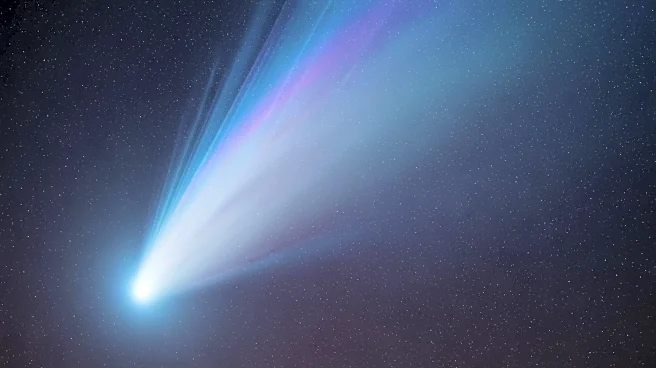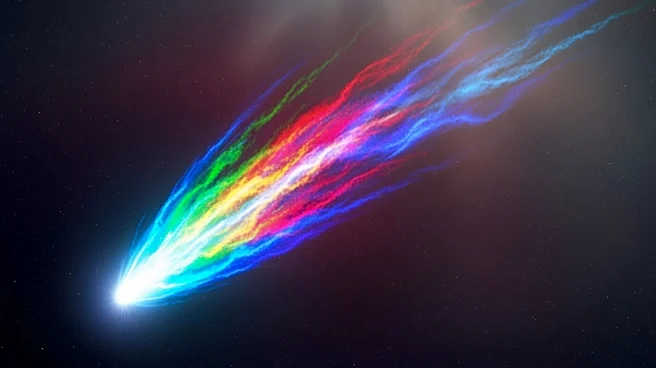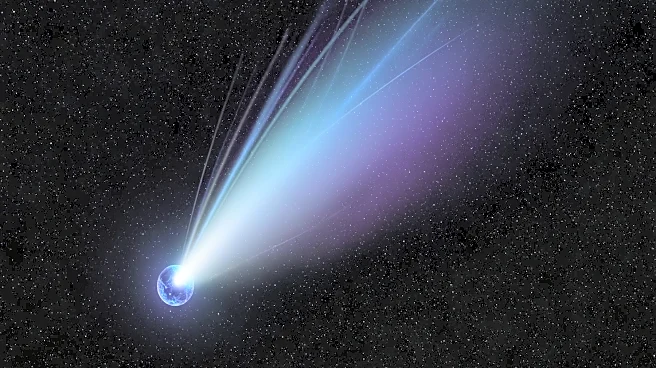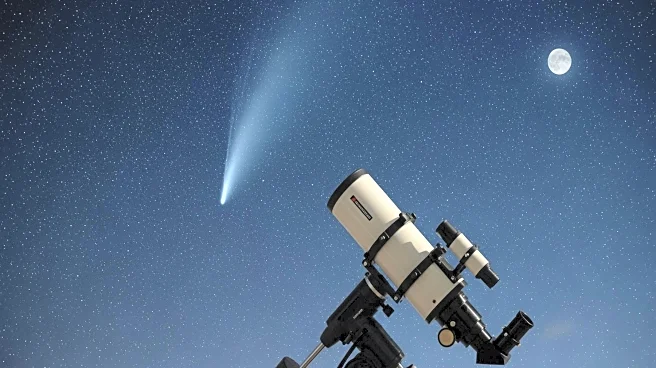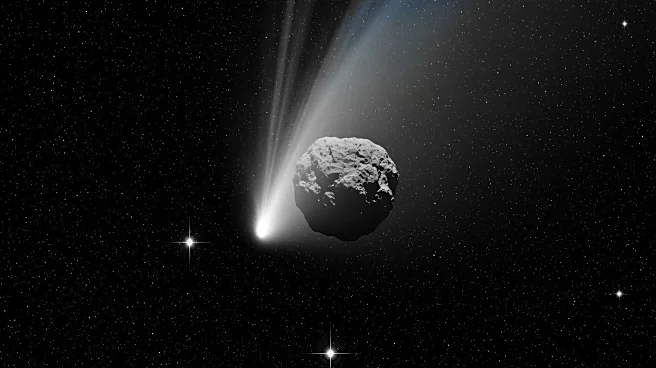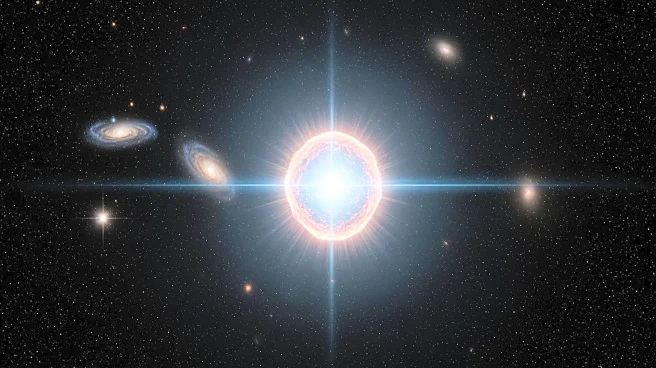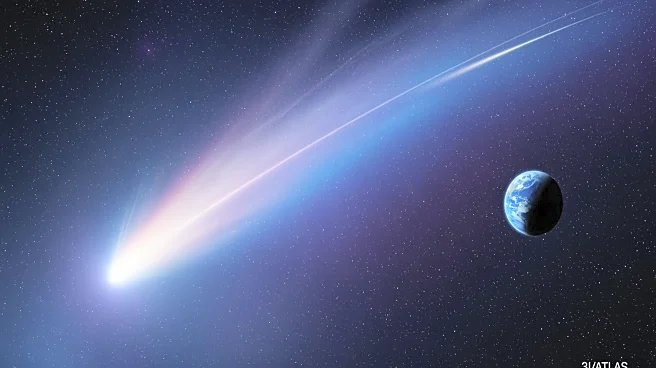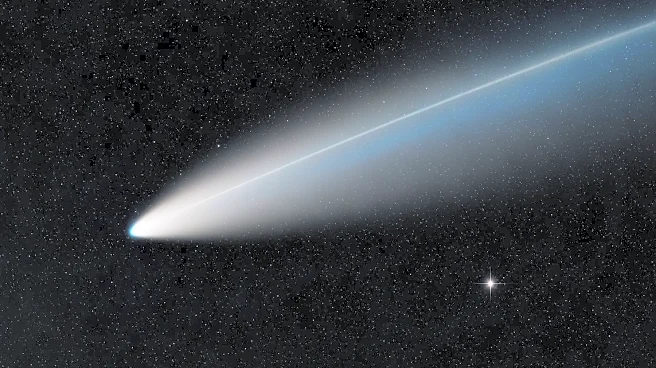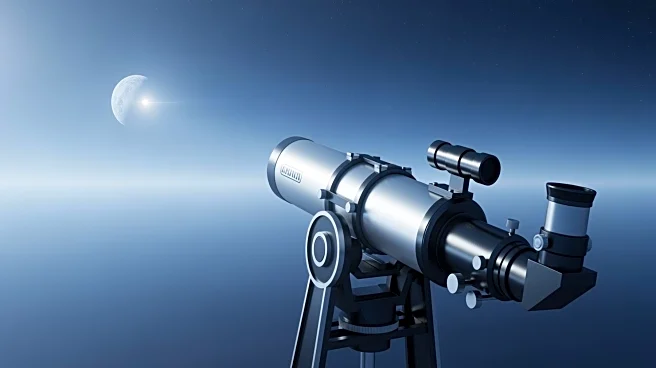What's Happening?
The interstellar comet 3I/ATLAS, currently visiting our solar system, has undergone a series of unexpected color changes. Initially observed with a red hue due to dust, the comet later appeared green,
likely from dicarbon or cyanide. Recent observations suggest it may now be turning blue, possibly due to gas emissions like carbon monoxide or ammonia. These changes have occurred as the comet approached the sun, reaching its closest point on October 29. The comet's color variations are not fully understood and are being studied by researchers.
Why It's Important?
The color changes of 3I/ATLAS provide valuable insights into the composition and behavior of interstellar comets. Understanding these phenomena can help scientists learn more about the materials and processes in the comet's home star system. The comet's behavior also offers a unique opportunity to study the effects of solar proximity on interstellar objects. These observations contribute to the broader field of astronomy and the study of cosmic phenomena, enhancing our understanding of the universe.
What's Next?
As 3I/ATLAS becomes more visible to Earth-based telescopes, researchers will continue to monitor its color changes and other characteristics. The comet will reach its closest point to Earth on December 19, allowing for more detailed observations. Scientists aim to study the comet's composition and behavior, potentially using spacecraft to gather additional data. The ongoing research will help determine the causes of the color changes and provide further insights into interstellar cometary science.
Beyond the Headlines
The study of 3I/ATLAS highlights the challenges and opportunities in observing interstellar objects. The comet's behavior raises questions about the impact of cosmic ray bombardment and solar interactions on its composition. These observations contribute to the understanding of interstellar travel and the potential for life-supporting conditions in other star systems. The research also underscores the importance of international collaboration in space exploration, as multiple agencies and observatories contribute to the study of this unique comet.
